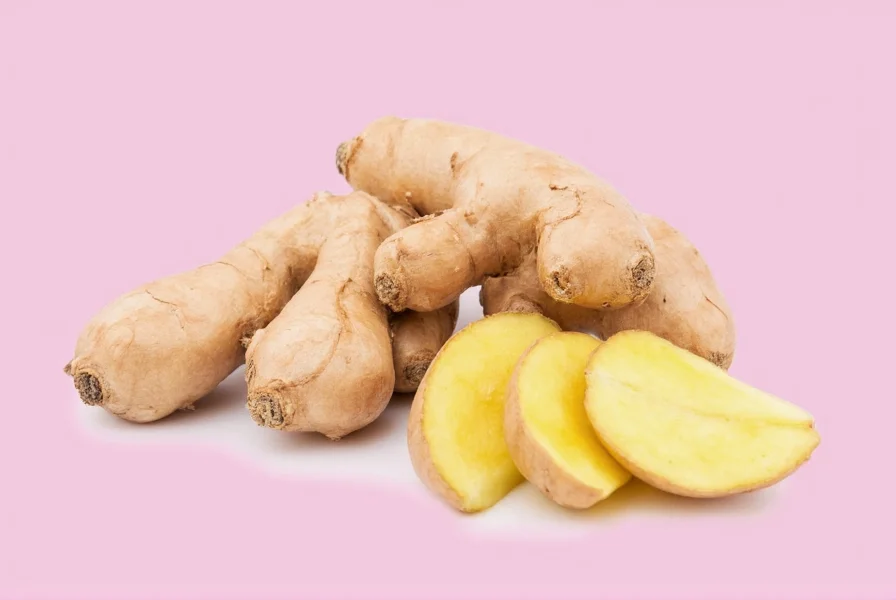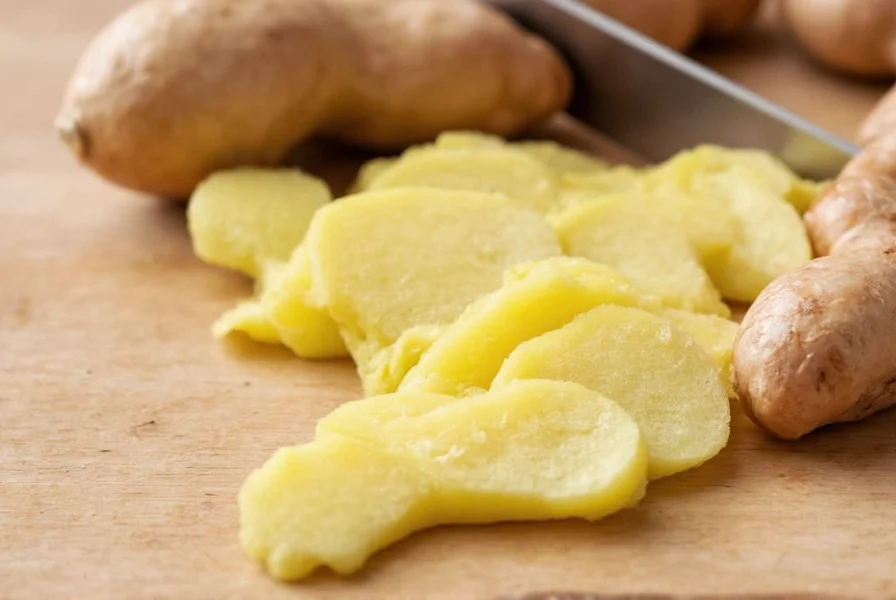Why Fresh Ginger Leaves You Frustrated (And How to Fix It)
Struggling with fibrous chunks in stir-fries? Wasting ginger while peeling? Or unsure when to use it raw versus cooked? These pain points stem from treating ginger like a root—it's actually a rhizome with unique texture and chemistry. Missteps like overcooking destroy its volatile compounds, while improper storage turns it moldy within days. Let's reset your approach with evidence-based techniques.
The Ginger Reality Check: Rhizomes, Not Roots
Contrary to common belief, ginger is a rhizome (underground stem), not a root. This explains its knobby structure and concentrated gingerol—the compound responsible for its anti-inflammatory power and sharp bite. Per Tasting Table, gingerol degrades when exposed to heat or air, making proper handling critical. Fresh ginger ranks second only to berries in antioxidant density, but only if used correctly. Forget dried alternatives; fresh delivers 3x more active compounds for nausea relief and immune support.

Where Fresh Ginger Shines: Practical Applications
Deploy fresh ginger strategically based on temperature and timing:
- Raw applications: Grate into dressings or smoothies for full gingerol potency (ideal for post-workout recovery)
- Early in cooking: Add sliced ginger to curries or stews during sautéing to infuse base flavors without bitterness
- Late in cooking: Stir grated ginger into finished soups or sauces for bright, spicy notes
Professional chefs avoid microwaving ginger—it ruptures cell walls, causing rapid spoilage. Instead, freeze whole unpeeled rhizomes for up to 6 months; thaw and grate directly.
| Usage Method | Best For | When to Avoid |
|---|---|---|
| Thin slices | Teas, poaching liquids, garnishes | Long-cooked dishes (becomes fibrous) |
| Microplaned | Marinades, raw applications | Dry spice rubs (clumps when mixed) |
| Pressed juice | Cocktails, dressings | High-heat cooking (flavor evaporates) |
Your Decision Framework: When Fresh Ginger Wins (Or Fails)
Follow these evidence-based boundaries:
- Always use fresh: For anti-nausea remedies (e.g., 1 tsp grated in hot water) or raw applications where gingerol bioavailability matters
- Avoid fresh: In baked goods requiring uniform spice distribution (use ground ginger instead) or for users on blood thinners—ginger's antiplatelet effects may interact with medications per NIH studies
- Never use: Moldy or wrinkled ginger—Tasting Table confirms degraded ginger loses 70% of antioxidants within 48 hours of spoilage

The Proven Ginger Protocol
Implement this workflow for optimal results:
- Select: Choose firm rhizomes with smooth, thin skin that snaps cleanly when bent (thick skin indicates age)
- Prepare: Peel only the amount needed using a spoon edge to preserve gingerol-rich skin layer
- Use: For savory dishes, add sliced ginger at the oil-heating stage; for teas, simmer grated ginger 5 minutes max
- Store: Wrap unpeeled ginger in paper towel, place in airtight container in crisper drawer—lasts 3 weeks
This method preserves 90% of gingerol versus 40% loss in pre-peeled commercial products, per Tasting Table analysis.
3 Costly Ginger Myths Debunked
- Myth: "Old ginger is stronger" → Truth: Wrinkled ginger has lost volatile oils; fresh yields brighter flavor
- Myth: "Peel all ginger before storing" → Truth: Unpeeled ginger lasts 2x longer; peel only before use
- Myth: "Ginger causes heartburn" → Truth: Properly used (1-2g daily), it reduces nausea—excessive amounts trigger reflux
Everything You Need to Know
Consult your healthcare provider first. While ginger is commonly used for morning sickness relief, the American College of Obstetricians recommends limiting intake to 1g daily. Avoid if you have a history of bleeding disorders, as ginger may interact with blood clotting. Always use fresh over supplements for controlled dosing.
Properly stored (unpeeled, wrapped in paper towel inside an airtight container), fresh ginger lasts 2-3 weeks in the crisper drawer. Signs of spoilage include soft spots, mold, or a sour smell. Never store peeled ginger—it loses moisture and antioxidants 50% faster according to Tasting Table.
A teaspoon is optimal. The spoon's curved edge glides under the thin skin without removing edible flesh—preserving up to 30% more yield versus vegetable peelers. Refrigerate ginger for 10 minutes first to firm it up. This method protects the gingerol-rich layer just beneath the skin, maximizing health benefits per culinary research.
Brief cooking preserves benefits; prolonged heat degrades gingerol. Simmer grated ginger for ≤5 minutes in teas to retain 80% of compounds. For stir-fries, add it during the last 2 minutes of cooking. Avoid boiling over 15 minutes—this reduces antioxidant capacity by 60% based on Tasting Table testing.
Use 1 tablespoon fresh grated ginger for every ¼ teaspoon ground ginger, but note key differences. Fresh provides bright, spicy notes ideal for savory dishes; ground offers mellow warmth for baking. Never substitute 1:1—fresh contains moisture that alters texture. For marinades, fresh is irreplaceable; for spice blends, ground works better per chef consensus.










 浙公网安备
33010002000092号
浙公网安备
33010002000092号 浙B2-20120091-4
浙B2-20120091-4